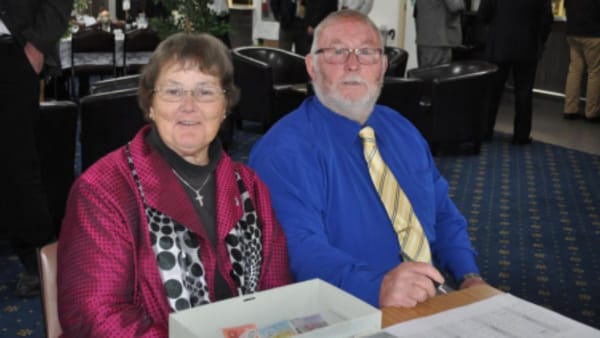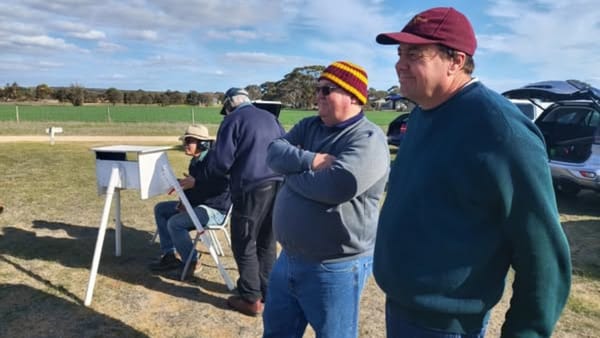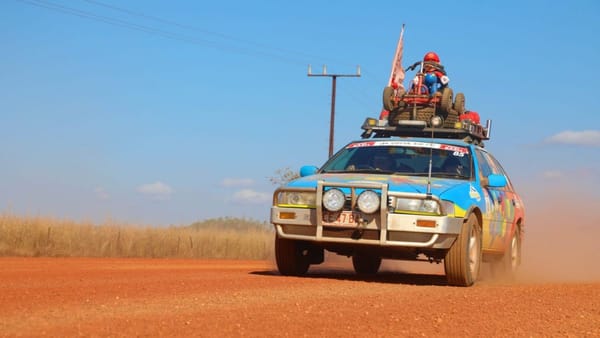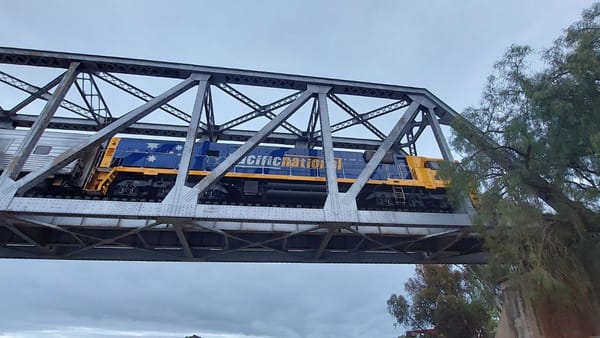Ride of the month: Murray Bridge sculpture trail
Dale Manson invites you to take a 16-kilometre ride around the city in search of 20 pieces of public art. How many have you seen before?

Visiting cyclists and local Murray Bridge riders are fortunate they are able to follow a relatively easy 16-kilometre road circuit that visits the array of marvellous sculptures located throughout the town.
The majority of sculptures located in Murray Bridge commemorate the River Murray riparian river environment and the local First Nation Ngarrindjeri community.
Starting off from the distinctive corten steel-structured Sturt Reserve trail head, riders can follow the dual-use concrete path that leads along the riverfront past the Murray Bridge Rowing Club.
The Sturt Reserve trail head structure is a nice sculptural element in itself.
For riders that need to refresh prior to the ride, nice public conveniences are located in an area behind the rowing club.

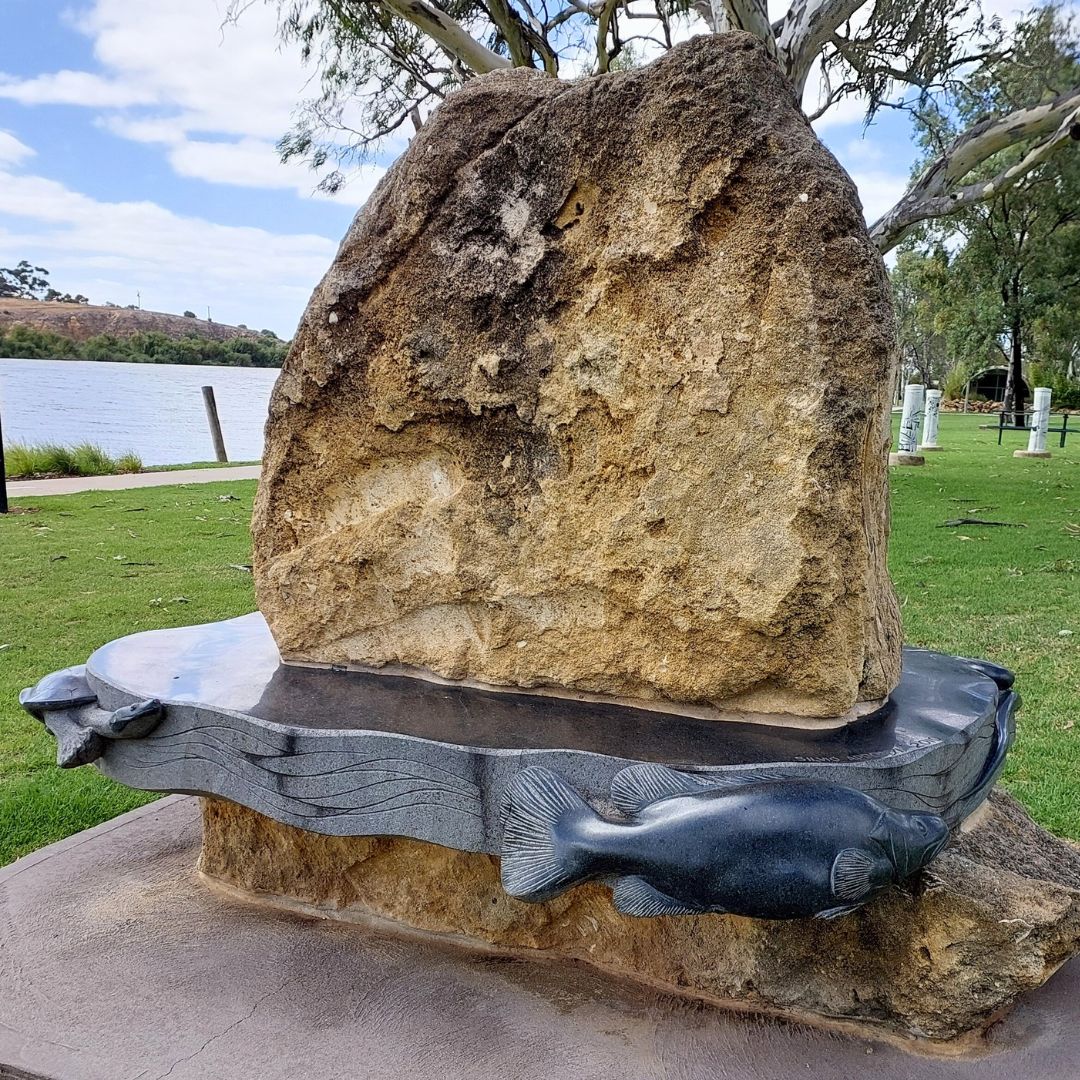

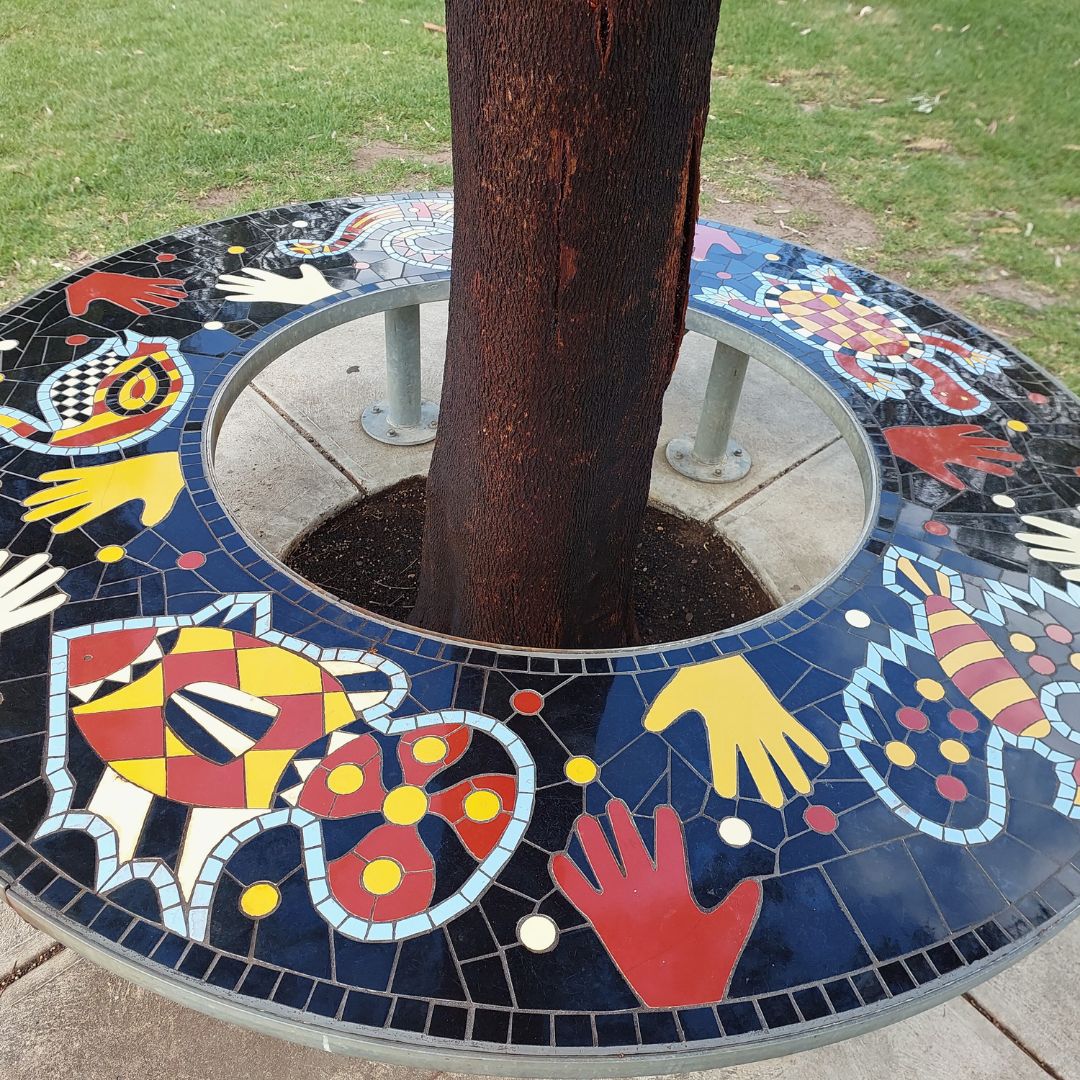
Along the riverfront pathway at Sturt Reserve, our first stop is the local limestone and Black Hill granite Ripples sculpture created in 2010 by internationally renowned sculptor Silvio Apponyi.
This sculpture symbolises the local river environment, and particularly some of the wildlife that rely on the river.
A little further along the pathway riders come across a number of beautifully carved and painted wooden bollards, set into the lawn.
These sculpted wooden bollards were created by members of the local Aboriginal community, symbolising a number of aspects of its culture.
Associated with this is a set of two circular mosaic seat sculptures created by a number of Aboriginal artists, including younger members of the local Aboriginal community.
Something not often considered to be in the ranks of sculpture is the stone cave inhabited by the Murray Bridge bunyip.
This stone cave is truly an iconic structure, worthy of its place amongst the ranks of Sturt Reserve sculptures.
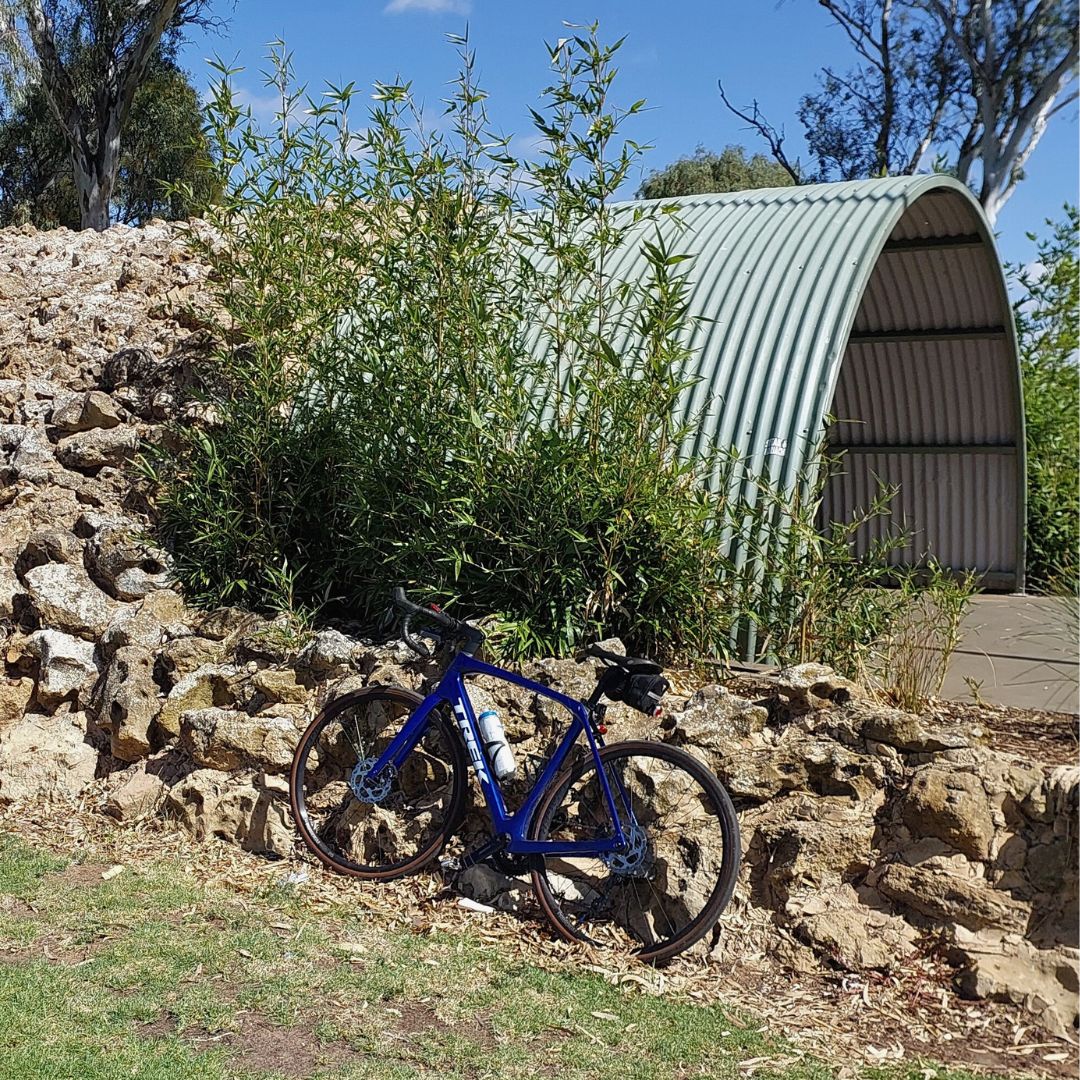
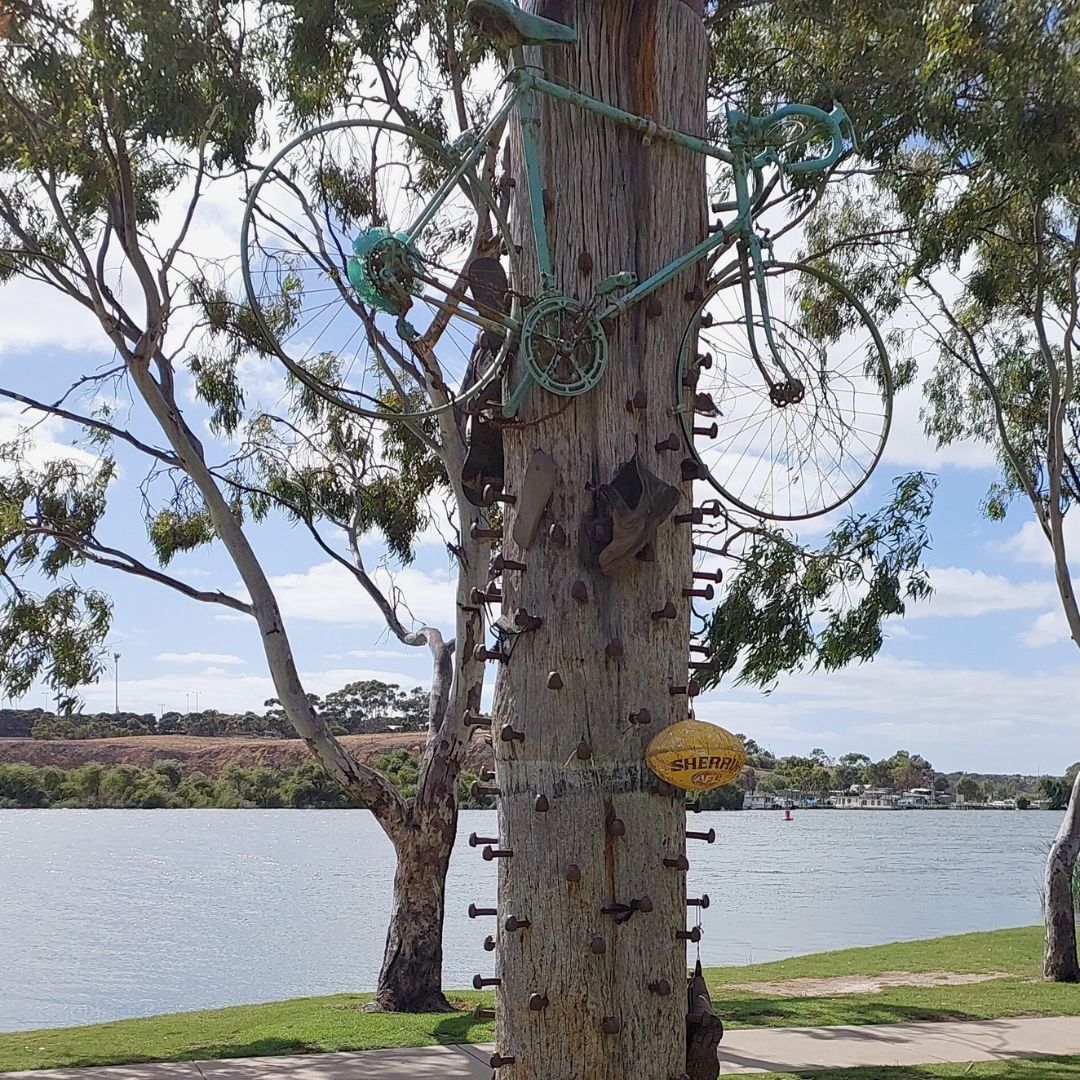

Riding a little further along the pathway brings cyclists to a truly emblematic sculpture, the Traveller’s Totem, constructed in 2016 and consisting of a timber pylons reminiscent of the paddleboat wharfs dotted along the Murray, impregnated with railway dog spikes that were once used in the vast railway network servicing River Murray ports.
Mounted atop the Traveller’s Totem sculpture, cyclists will notice a familiar object.
A bicycle symbolises one of the primary modes of transport used by the far-flung local community to travel the vast distances required to access paddle wheelers and trains.
As an interactive piece of sculpture, visitors are encouraged to add their own items of transport memorabilia to hang from the dog spikes of the Traveller’s Totem.
Adjacent is a 2024 granite sculpture, the Place of Courage, a tribute to victims of family and domestic violence.
Dismounting at this point and reflecting on the deep meaning of the Place of Courage, some bike riders will appreciate their ability to temporarily escape from a sometime rough family environment into a world full of unrestricted freedom associated with cycling.
Stories create community. You can help Murray Bridge News tell our community’s stories.
At this point, the array of sculptures at Sturt Reserve comes to an end.
Cyclists need to leave the dual-use concrete path and ride south along the bitumen back roads – Cooke, Oxford and Leslie Streets – until they reach the Long Island Road frontage of Murray Bridge High School.
Located near the corner of Long Island and Swanport Roads is Rotary Jubilee Park, where artist Christine Cholewa and high school students have constructed the gabion-walled Torus 2020 sculpture using stones sourced from the old Bridgeport Hotel and an array of tiles.
Referencing the local region as a food bowl, Torus 2020 uses its doughnut shape as a symbol of continuity and inclusiveness without corners or hierarchy.
To reach the next sculpture site, bike riders need to follow Swanport Road and Jervois Road south under the South Eastern Freeway bridge.
Here, on the corner of Swanport Village and Jervois Roads, can be found the remarkable Murray Bridge wastewater pumping station that has been erected in a manner incorporating sculptural aspects celebrating the River Murray’s flow and local First Nations community’s swan egg totems.


Cladding the pump station are corten steel sculptural symbols of the River Murray flow.
Forming part of the native garden adjacent to the pump station are two mosaic stone swan egg sculptures, totems of the local First Nations community.
At this point, it is time to turn the bike around and head back under the freeway bridge along Swanport Road in a northerly direction.
Next stop is outside the Murray Bridge High School oval on the right-hand side of Swanport Road, where a simple blue tree sculpture sits.
The blue tree project has grown to become a national initiative, using dead trees painted blue to raise awareness of the mental health cause.
By spreading the paint and spreading the message that it’s okay to not be okay, the local high school community’s blue tree sculpture makes a contribution to breaking down stigmas associated with mental health issues.
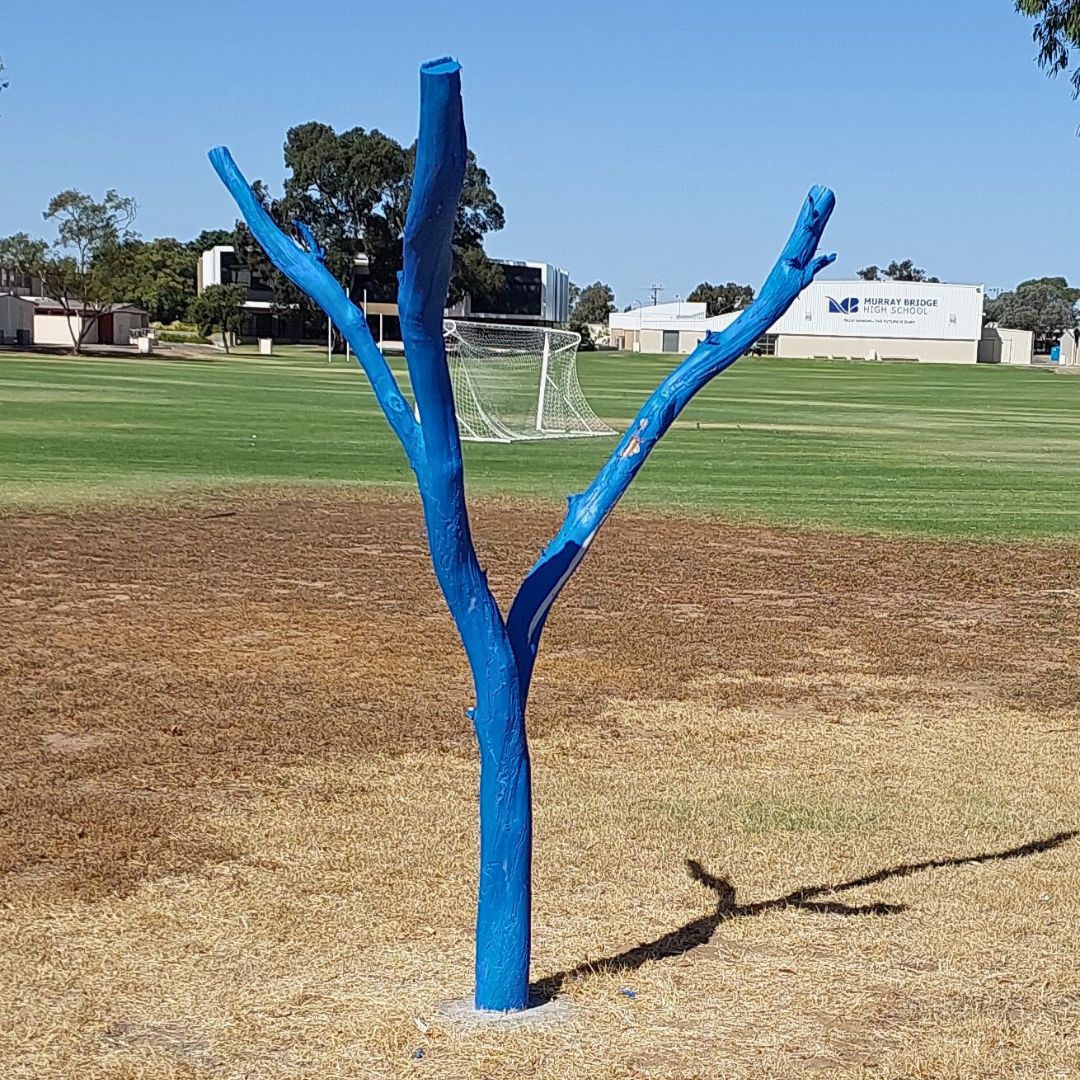
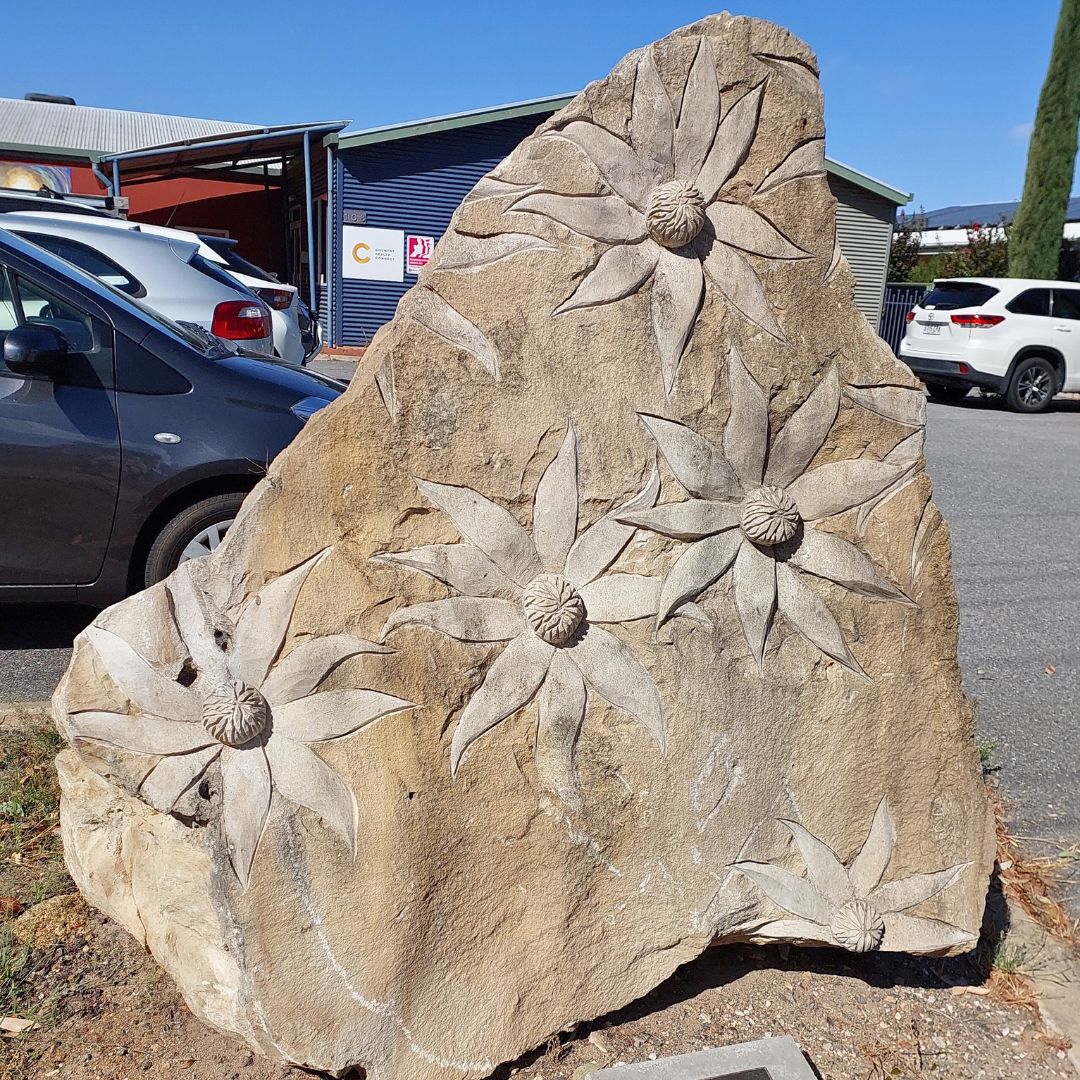

Continuing north along Swanport Road cyclists will come across a remarkable limestone flannel flower sculpture adjacent to the Murray Bridge hospital’s Our Wellbeing Place.
The flannel flower sculpture was produced by world-renowned sculptor Silvio Apponyi in 2008 and its subject is an international symbol of wellbeing.
A bit further north along Swanport Road, located on the left-hand side in front of the Resthaven aged care facility, is the marvellous corten steel sculpture Dream on Flight.
This sculpture was commissioned by Resthaven and produced by metal sculptor Gerry McMahon to depict the eternal youthful quality that exists within everyone.
The weathered corten metal figures contained within Dream on Flight depict a pelican, child and grandmother, while the wooden platform on which they stand represents the riverside lifestyle of a River Murray wharf.
At this point cyclists plan their route to head due west to meet up with Maurice Road where an exquisite stone wall located on the corner of Maurice and Adelaide Roads forms its own sculptural significance.


This sculpted stone wall represents the commitment of Murray Bridge people to undertake the plethora of volunteer community projects that add to the general quality of life within the town.
Riding further west along Adelaide Road in the manicured linear park, the beautiful upright Water a’Plenty sculpture by former local high school art teacher Goran Yakas comes into view on the left-hand side.
Yakas used local limestone impregnated with fossils and a cast bronze frog to convey the story of Water a’Plenty, symbolising the continuing cycle of wet and dry and plenty and drought so characteristic of the River Murray.
Water a’Plenty is the westernmost sculpture on this cycling trail, so riders now need to reverse direction and head back into the business centre of the town.
On Bridge Street, just across the traffic lights that separate Mannum Road from Swanport Road, Edwards Square is on the right-hand side.
In the garden on the Bridge Street fringe can be found the local limestone Transformation sculpture created by Birgit Grapentin in 2010.
On the left-hand side of Bridge Street is Diamond Park, containing the local limestone Blossom sculpture created by Antone Bruinsma, also in 2010.


Back on the bike again and heading eastward along Bridge Street, swing right into Seventh Street and into the local government centre car park.
It is in the local government centre garden that a former fountain, closed off during the last big drought, has now been converted into another sculpture.
This exquisitely coloured concrete and mosaic sculpture created by local Ngarrindjeri community member Lena Rigney and sculptor Michael Tye tells the Ngarrindjeri story of Ngurunderi.
On the bike again heading back to Bridge Street, cyclists turn right at the lights and into Sixth Street to view the polished vertical tubular steel Overflow sculpture on the corner outside the old town hall.
Created as an active fountain sculpture by Glen Manning and Kathy Daly to depict water connecting the community, Overflow is now rarely operational in that form due to public safety concerns associated with the water creating dangerously slippery conditions across the footpath.
Further up Sixth Street can be found two of the three sequence elements of the James Voller Watermark – Reflected freestanding glass panel sculpture.
This is where our cycle tour of Murray Bridge’s sculpture trail ends, after a 16km road circuit and visits to 20 separate sculptures.



More rides of the month
- Murray Bridge to Monarto Safari Park
- Murray Bridge to Mypolonga and back
- Bison, freight trains and motocross at Rocky Gully
- More rides of the month
Stories create community. You can help Murray Bridge News tell our community’s stories.


